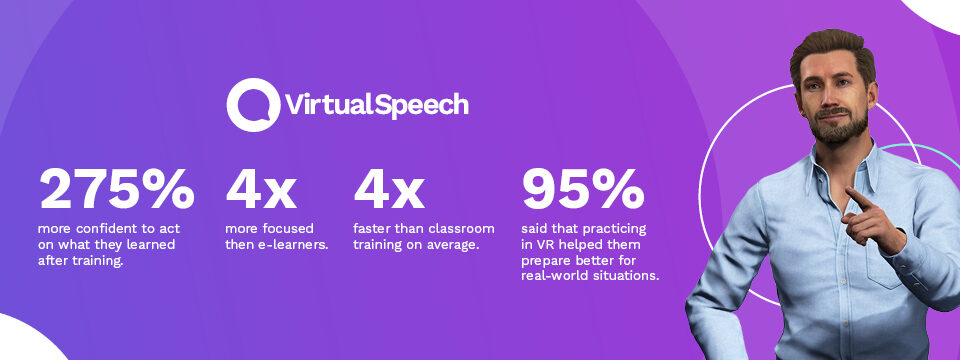Apple’s Vision Pro story has moved from “intriguing prototype for work” to a clearer enterprise training platform with the M5-powered upgrade, the Dual Knit Band, and the enterprise-focused changes in visionOS 26. The result: smoother, more comfortable sessions, faster AI workflows, and—crucially—better tools for shared-device deployments that are common in training environments.
If you’re evaluating headsets for corporate learning, the big question is no longer “can it run good XR training?” but “can we deploy, manage, and reuse it efficiently?” This update helps answer that.
What changed with the M5 upgrade (and why L&D teams should care)
1) Smoother training simulations and higher visual clarity
Training succeeds when learners stay immersed. The M5 upgrade improves the “feel” of spatial experiences: faster system responsiveness, improved graphics capability (ray tracing and mesh shading), 10% more pixels rendered to the micro-OLED displays, and refresh rates up to 120Hz. This helps reduce motion blur – especially valuable when learners are moving, turning, or performing close visual inspection tasks.
For corporate training, this translates into fewer interruptions, reduced motion discomfort, and higher confidence when practicing precision-based skills such as equipment checks, safety walkthroughs, or spatial assembly guidance.

2) Comfort that supports real training session lengths
The introduction of the Dual Knit Band addresses one of the biggest barriers to headset-based learning: comfort over time. The redesigned strap system distributes weight more evenly across the head and allows independent adjustment of upper and lower straps.
This makes Vision Pro far more practical for 20-45 minute training modules, instructor-led workshops, and multi-session learning programs – without the fatigue that can undermine immersion and learning outcomes.
3) Battery life that fits training schedules
With up to 2.5 hours of general use and up to 3 hours of video playback, the upgraded Vision Pro can support standard training blocks and rotation-based device sharing. For longer sessions, the ability to connect to power ensures minimal disruption.
This flexibility is important for on-site training rooms, roadshows, and blended learning environments where downtime and device logistics matter.
4) Faster AI-powered learning workflows
The M5 chip’s enhanced Neural Engine enables faster on-device AI processing, improving responsiveness in AI-driven training scenarios. This supports more realistic coaching, contextual guidance around 3D objects, and faster iteration of spatial training content.
For learning teams, this opens the door to richer feedback loops and more adaptive training experiences—without relying heavily on cloud processing.
The biggest leap for corporate training: visionOS 26 enterprise features
While hardware improvements matter, the most meaningful changes for L&D teams come from visionOS 26, which introduces long-requested enterprise deployment capabilities.
Declarative device management allows IT teams to control software updates and configurations more predictably, reducing last-minute issues on training days.
Return to Service enables devices to be securely wiped and automatically reconfigured between users, making shared headset fleets far more viable for training centers and corporate programs.
Enhanced Quick Start options reduce setup friction for learners, while more flexible enrollment paths simplify procurement and standardization across organizations.
Where Vision Pro now makes sense in corporate training
The upgraded Vision Pro is best suited to high-value training scenarios – where realism, presence, and risk reduction justify premium hardware.
This includes technical training for equipment familiarization, safety and incident response simulations, quality inspections, and spatial process walkthroughs, as well as soft-skills training such as leadership, sales conversations, and customer service roleplay.
In these contexts, immersion and visual fidelity can directly impact confidence, retention, and behavior change.
The trade-offs L&D teams should plan for
Vision Pro remains a premium device, and ROI is strongest where training is expensive, risky, or difficult to deliver consistently in the real world. Organizations should also plan for shared-device logistics such as hygiene, lens inserts, charging, and scheduling.
The good news is that visionOS 26 significantly reduces many of the operational hurdles that previously made shared XR deployments impractical.
What this means for corporate training teams
If Vision Pro previously felt like a single-user, experimental device, the M5 upgrade changes that perception. Improved performance, better comfort, and enterprise-ready device management make it a far more credible option for premium, high-impact corporate training programs.
For organizations already investing in immersive learning, Apple Vision Pro is no longer just a glimpse of the future – it’s a platform that can meaningfully support training today, where quality and impact matter most.




